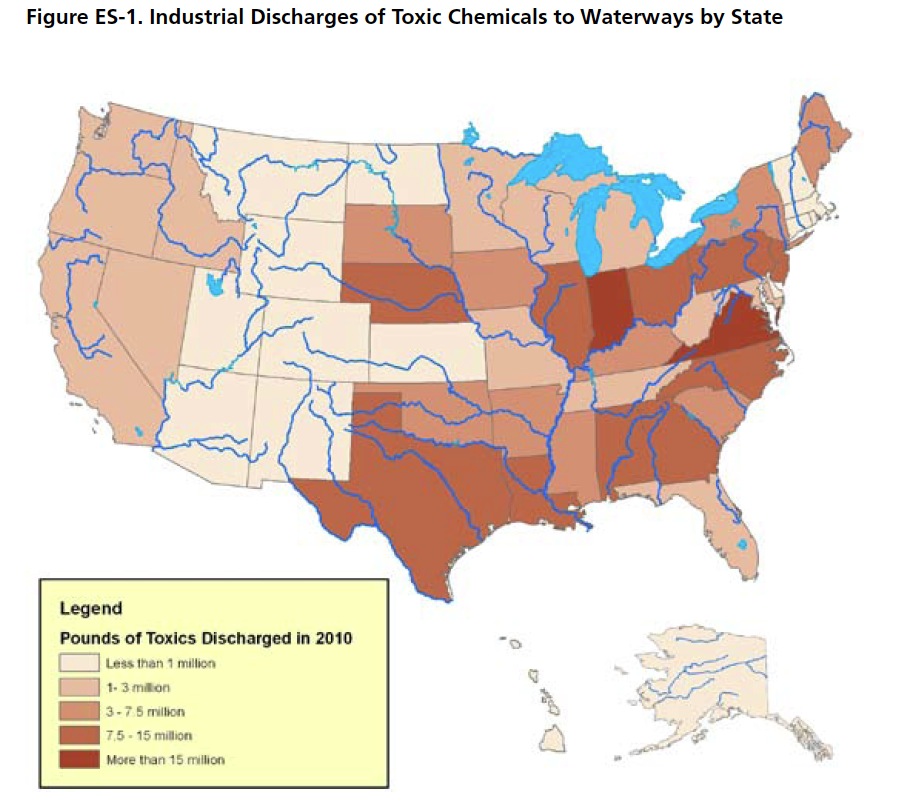ENVIRONMENT MINNESOTA
Executive Summary
Industrial facilities continue to dump millions of pounds of toxic chemicals into America’s rivers, streams, lakes and ocean waters each year—threatening both the environment and human health. According to the U.S. Environmental Protection Agency (EPA), pollution from industrial facilities is responsible for threatening or fouling water quality in more than 14,000 miles of rivers and streams, more than 220,000 acres of lakes, ponds and estuaries nationwide.
The continued release of large volumes of toxic chemicals into the nation’s waterways shows that the nation needs to do more to reduce the threat posed by toxic chemicals to our environment and our health and to ensure that our waterways are fully protected against harmful pollution.
Industrial facilities dumped 226 million pounds of toxic chemicals into American waterways in 2010, according to the federal government’s Toxic Release Inventory.
- Toxic chemicals were discharged to more than 1,400 waterways in all 50 states. The Ohio River ranked first for toxic discharges in 2010, followed by the Mississippi River and the New River in Virginia and North Carolina.
- This represents a small (2.6 percent) decrease in the overall volume of toxic releases since the previous edition of this report, released in 2009 and based on data from 2007.
- Nitrate compounds—which can cause serious health problems in infants if found in drinking water and which contribute to oxygen-depleted “dead zones” in waterways—were by far the largest toxic releases in terms of overall volume.
- Small as well as large waterways received heavy doses of toxics. Because of a single, large release of arsenic and metal compounds from a Nevada gold mine into three small creeks, the combined discharges of developmental toxicants in those creeks were larger than the discharges of such toxicants to the Ohio and Mississippi Rivers combined.
- Toxic releases continued in already damaged waterways. The Calumet River system in Indiana and Illinois— home to five different Superfund toxic waste sites, and at one time so polluted that not even sludge worms could live there—ranked high on the list of developmental and reproductive toxic releases due to ongoing discharges from steel mills and an oil refinery.
About Environment Minnesota
www.environmentminnesota.org
“Environment Minnesota is a statewide, citizen-based environmental advocacy organization. We believe there’s something special about Minnesota — something worth protecting and preserving for future generations. Whether it’s the light shimmering off Lake Superior, the wild beauty of the Boundary Waters, or our countless parks and forests, Minnesota’s natural wonders enrich our lives in countless ways. “
Tags: Clean Water Act, Environment Minnesota, EPA, toxic chemicals, U..S. Environmental Protection Agency







 RSS Feed
RSS Feed